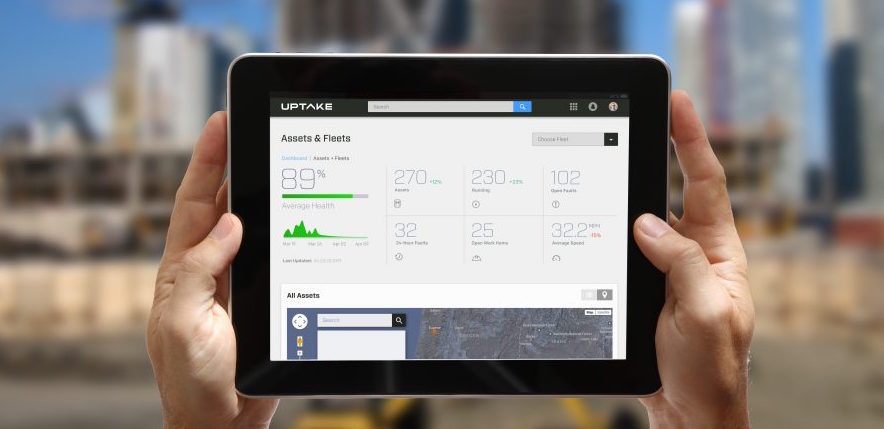During the first half of 2018, venture capital firms invested a record $1.05 billion in construction technology startup companies, or nearly 30% more than during the same period in 2017, according to a new report from JLL.
Since 2009, VCs have funded 478 ConTech deals totaling $4.34 billion. “The construction sector is on the verge of major disruption, as tech startups tackle head-on the industry’s biggest pressure points,” says Todd Burns, President of Project and Development Services for JLL.
Indeed, JLL put its money where its mouth is when it brought on two Silicon Valley veterans last year to launch JLL Spark, a business that includes a $100 million global venture fund, and is set up identify and deliver new technology driven real estate service offerings.
Its report calls out three areas where ConTech startups are focusing their efforts:
• Collaborative software, and especially leveraging cloud-based solutions to optimize workflow. Some of the frontrunning startups in this category include Procore Technologies, Flux Factory, PlanGrid, and Clarizen.
• Offsite construction. The building industry can no longer ignore prefabrication and modular solutions at a time when skilled labor is getting harder to hire. Among the new leaders in this category is Katerra—into which Soft Bank has invested $865 million—which is building several new prefab factories, and in recent months has acquired the design firms Michael Green Architecture and Lord Aeck Sargent.
• Big data and artificial intelligence. Predictive data and automation tools are helping construction teams make better-informed decisions to save time and money by extending the work life of equipment, reducing jobsite risk, and automating simple processes. Uptake Technologies is among the startups in this category’s vanguard.
Related Stories
Sponsored | Resiliency | Jan 24, 2022
Blast Hazard Mitigation: Building Openings for Greater Safety and Security
Coronavirus | Jan 20, 2022
Advances and challenges in improving indoor air quality in commercial buildings
Michael Dreidger, CEO of IAQ tech startup Airsset speaks with BD+C's John Caulfield about how building owners and property managers can improve their buildings' air quality.
3D Printing | Jan 12, 2022
Using 3D-printed molds to create unitized window forms
COOKFOX designer Pam Campbell and Gate Precast's Mo Wright discuss the use of 3D-printed molds from Oak Ridge National Lab to create unitized window panels for One South First, a residential-commercial high-rise in Brooklyn, N.Y.
Sponsored | BD+C University Course | Jan 12, 2022
Total steel project performance
This instructor-led video course discusses actual project scenarios where collaborative steel joist and deck design have reduced total-project costs. In an era when incomplete structural drawings are a growing concern for our industry, the course reveals hidden costs and risks that can be avoided.
Architects | Dec 20, 2021
Digital nomads are influencing design
As our spaces continue to adapt to our future needs, we’ll likely see more collaborative, communal zones where people can relax, shop, and work.
Urban Planning | Dec 15, 2021
EV is the bridge to transit’s AV revolution—and now is the time to start building it
Thinking holistically about a technology-enabled customer experience will make transit a mode of choice for more people.
Healthcare Facilities | Dec 15, 2021
MEP design considerations for rural hospitals
Rural hospitals present unique opportunities and challenges for healthcare facility operators. Oftentimes, the infrastructure and building systems have not been updated for years and require significant improvements in order to meet today’s modern medical demands. Additionally, as these smaller, more remote hospitals are acquired by larger regional and national healthcare systems, the first step by new ownership is often to update and rehabilitate the building. But how can this be done thoughtfully, economically, and efficiently in ways that allow the engineering and facility staff to adapt to the changes? And how can the updates accurately reflect the specific needs of rural communities and the afflictions with which these areas most commonly face?
Sponsored | BD+C University Course | Oct 15, 2021
7 game-changing trends in structural engineering
Here are seven key areas where innovation in structural engineering is driving evolution.
Sponsored | Glass and Glazing | Oct 1, 2021
Seizing the Daylight with BIPV Glass
Glass has always been an idea generator. Now, it’s also a clean energy generator.
Glass and Glazing | Sep 30, 2021
Plans move forward on Central Place Sydney, duel towers with an AI-driven façade system
SOM and Fender Katsalidis are designing the project.

















